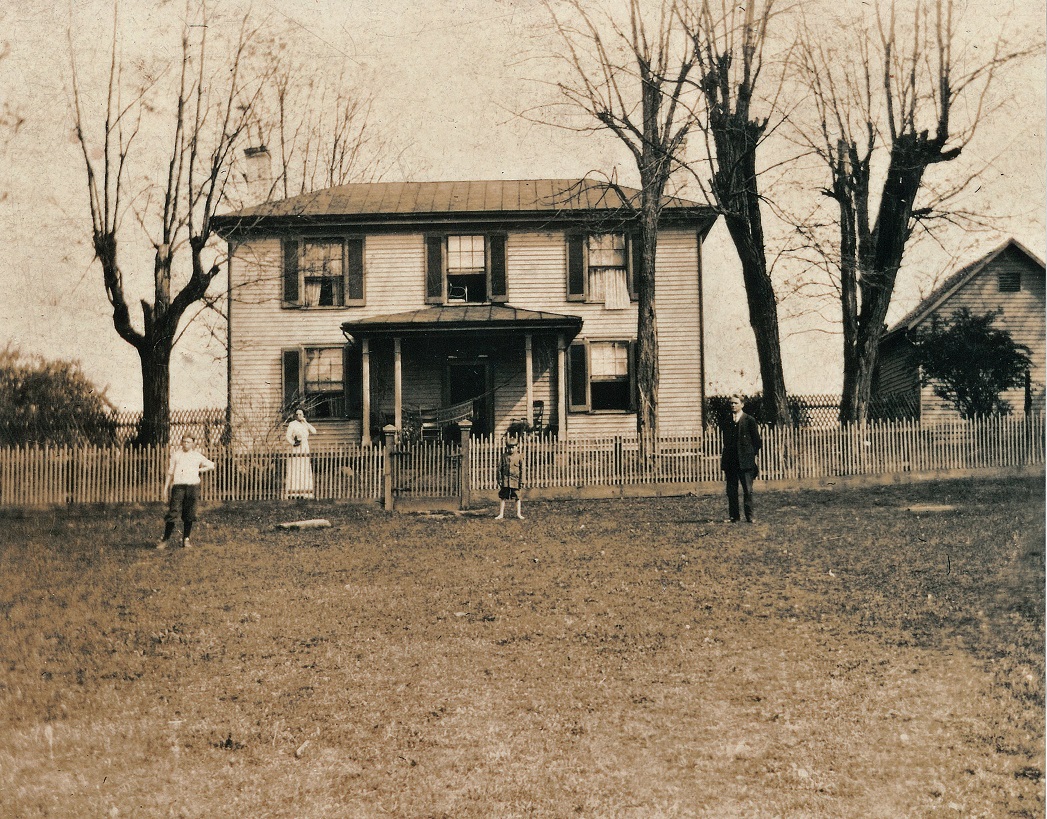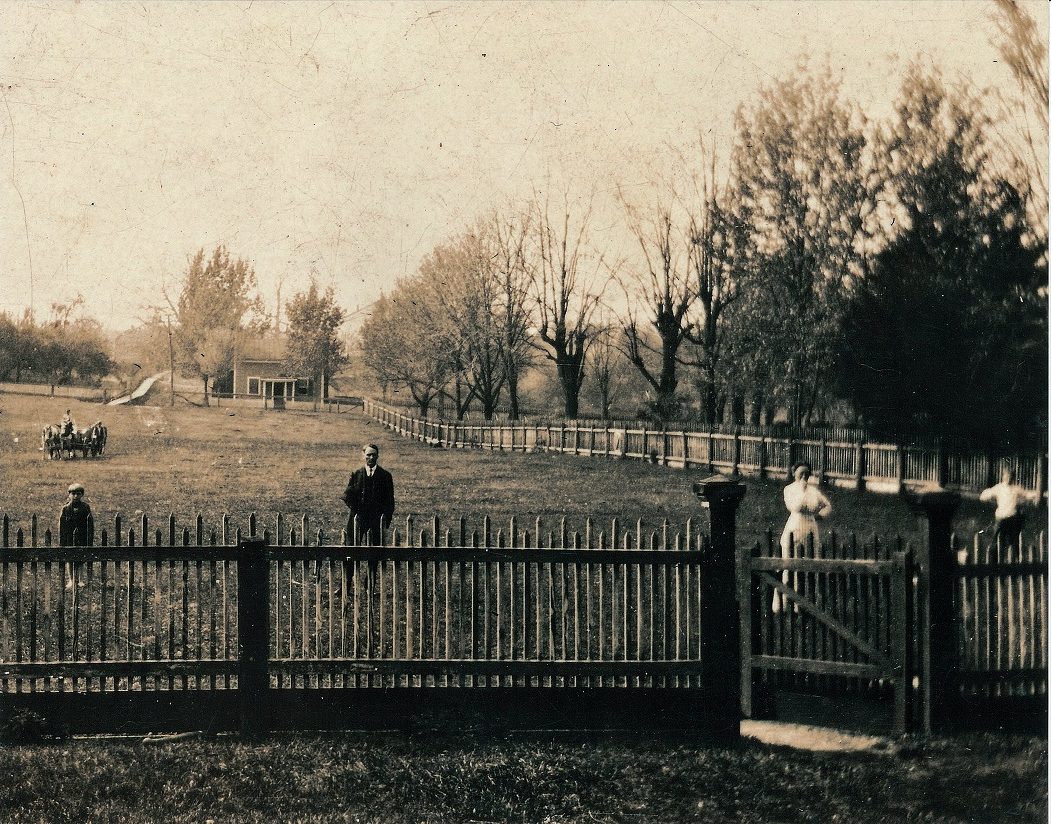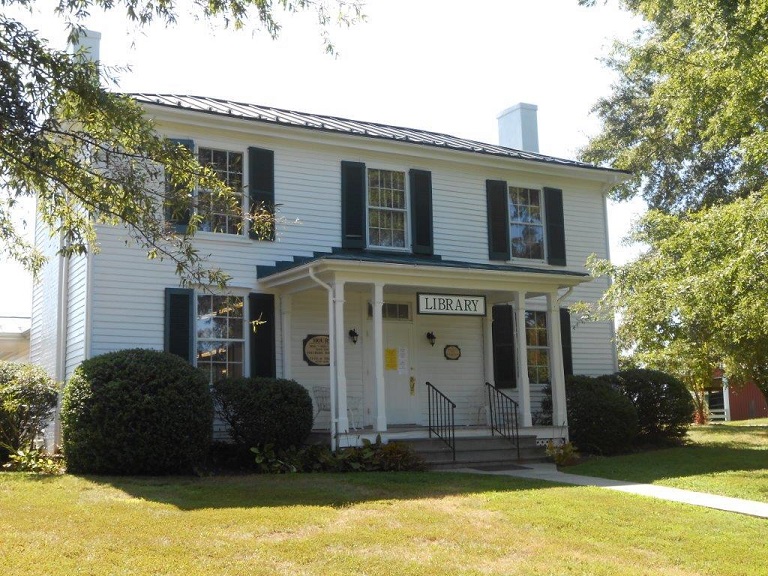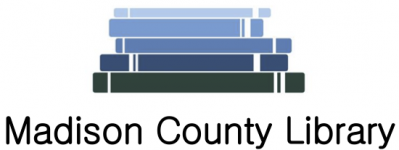History
The Madison County Library Association sponsored the first county library in 1937. Started as a project of the local Home Demonstration Clubs, it opened in a tiny room, not much bigger than a closet, in the War Memorial Building with only 15 books. Mrs. Anna Hall was the first librarian and patrons were sometimes allowed to browse and to check out their own books on the honor system. The first fundraiser was a silver tea where books and money were donated, increasing the original collection to 35 books.
By 1957, the library owned more than 2000 books and many shelves in the small room held two rows of books—making it almost impossible to see the back row. The librarian’s salary was paid first by the Works Progress Administration and later by the county. Funding for books was provided by local organizations and individual citizens.

Thomas W. Lewis Home

View from the Lewis home towards Main Street. Ruth Road is visible on the left.
In 1969, Dr. and Mrs. D. F. Weaver gave 480 books on Americana focusing on Native American history and western lore. Brass plaques throughout the library identify donors, including those on furniture crafted in Madison County by E. A. Clore Sons. Local artists generously donated a permanent collection of their prints and paintings. Boy Scouts, Cub Scouts, Madison County Garden Club, Jr. Garden Club, and 4-H Clubs were among the organizations that provided landscaping assistance. Mr. Melvin Aylor, next door neighbor and mayor of Madison, kept the front lawn mowed for many years. Prior to the development of the state’s community college program, The Madison Center of the University of Virginia provided a collection of books for the extension students, which was housed in the library until 1973. By 1976 the library had approximately 8,000 books and the librarian, Margie McLain, was typically circulating 20 – 30 books each day.
In 1987, an addition, funded by local donations, was added onto the back of the historic building. Muriel Murphy left a portion her estate sufficient to pay off the new addition and form the nucleus of a building and grounds fund. On May 20, 1990, a celebration was held to commemorate the retirement of the library loan. In 2001, librarian Bonnie Utz completed the transfer of the card catalog from wooden drawers to a new computer system.
In August of 2004, the second addition to the building was moved into, creating an additional 3000 square feet of space on the top floor and a 3000 square foot unfinished basement for our future needs. That loan was paid off within 5 years, thanks to our patrons and supporters. A yearly fundraising drive, in addition to Used Book Sales sponsored by The Friends of the Library, provide avenues for continued community support.
Today, the Madison County Library is one of only 8 independent libraries in the state. It currently has over 5,300 registered patrons, 55,000 items in the collection, and averages 500 people visits per week. The card catalog and circulation systems have been computerized. In addition, the library offers audiobooks, DVDs, and CDs for checkout, and over 24,000 eBooks and audiobooks for digital download. We maintain computer stations for our patrons to use, as well as high speed wireless internet. Our research database has everything a student needs for their work as well as a “learn at your own pace” language courses, auto repair and more.

The Madison Library Building in the 21st century
